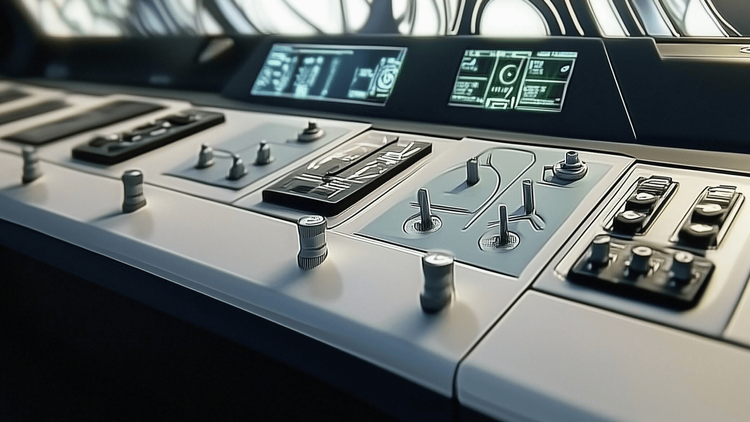How We Built the Emotional Journey of The Green Spurt - Part I: Laying the Emotional Groundwork

Designing spatial experiences is not only about what people can do in a space. It is about what they should feel there.
The Green Spurt grew from that idea. We wanted an experience that behaved like an escape room but carried the emotional clarity of a well-told story. This article details the frameworks and pipelines that helped us along the way.
If you are building spatial experiences, whether narrative, playful, or exploratory, these are the steps that helped us keep emotion at the center.
The Green Spurt: An original story powered by Design Fiction
The Green Spurt is a collaborative escape room-style game for Apple Vision Pro. We built it as an experiment in shared storytelling, not just as a puzzle game. From the start, the story world was intended to hold the emotional stakes of what players would later experience.
Set in a near future where toxic pollen pushes us to reimagine everyday life, humanity has moved into BioVaults—facilities first built for research and equipped with advanced air‑filtration systems. The BioVault is both sanctuary and machine. It preserves what remains and it depends on its Watchers.
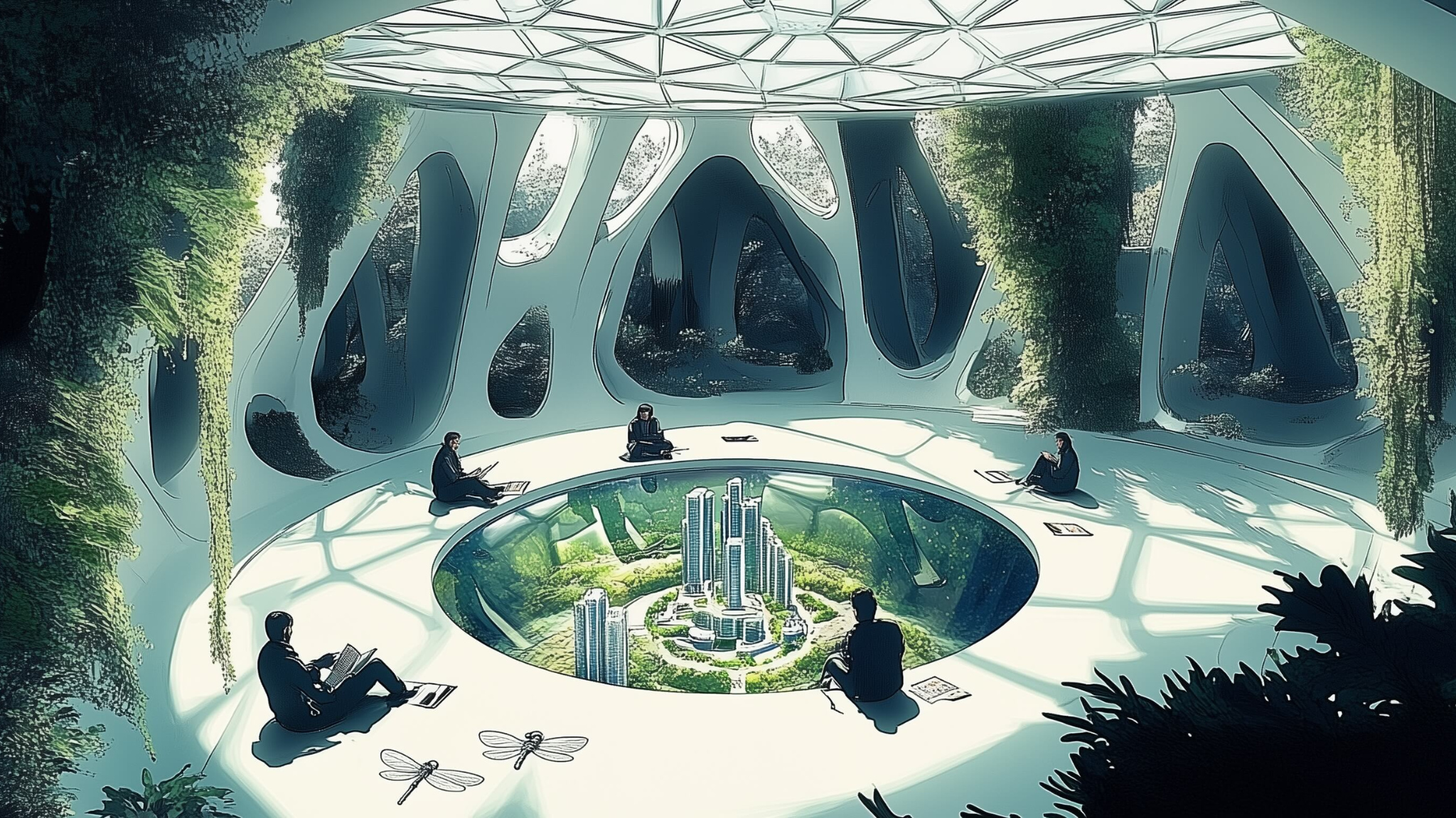
Building the story was our emotional ground zero, the anchor that shaped how we approached mechanics, visuals, and presence. We wanted players to enter an experience that carried meaning and quiet urgency. We needed to understand how the world itself would feel.
We practiced Design Fiction rather than inventing lore for its own sake. We looked for weak signals in the present, mapped plausible trajectories, and borrowed an artifact from the Museum of the Future in Dubai to seed the world.
Every element had a reason to exist, not only a visual style but an emotional purpose. It gave structure to our intuition and allowed story and design to evolve side by side, turning research and imagination into a believable world.
In the context of spatial experiences, Design Fiction (by Near Future Laboratory) is a practical tool that helps transform storytelling into storyliving by turning interactive elements into narrative anchors, artifacts that carry the story and emotion of the world. By treating each object as living evidence of how a world works, creators can craft experiences that feel tangible, emotionally charged, and truly inhabited.
The Mechanics Repository
After building the story world, this was our next step. A wide net of interaction patterns for a spatial escape room. More than 50 ways to ask players to notice, reason, and act. Our mechanics repository pulled notes from everywhere we looked: visionOS affordances, kids’ toys and games, competitve TV shows, fun math puzzles, escape room staples, museum exhibitions, and more. We did not plan the experience yet. We prepared ingredients.

In hindsight, this was our first structured exploration of how emotion could emerge through interaction. By mapping those mechanics, we were also mapping feelings: curiosity when you flip something unknown, insight when equipment pieces clicks into place, delight when collaboration unlocks progress.
We also discovered its long tail. Originally intended for an escape room–style experience, the mechanics repository soon proved more versatile. When we later created a small email puzzle for our beta testers, we went back to this same repository for ideas. It became a living resource that will now extend beyond The Green Spurt and will continue to evolve with every new spatial experience we build.
The Blueprint
With the mechanics repository on the table and the world work above, we drew the space. Top down. Table. Control center. Interfaces with clear purpose. In the same window we researched escape rooms more deeply. We broke down common components and asked how they translate to a tabletop experience in visionOS.
The blueprint was our low‑fidelity conversation starter. It wasn’t about precision but about exploring possibilities quickly. Many of those early ideas changed as we learned that sketches and plans only reveal their truth when experienced in the headset, but that was the point. The blueprint gave us something tangible to react to, a tool for alignment and dialogue on the structure of the experience. If we were to design another spatial experience today, we would use the same approach, simple drawings that invite iteration before production.
Without naming it, we were staging emotion in space. The blueprint helped us map comfort, tension, and discovery into the physical space. It showed us that spatial composition itself can guide emotion as much as narrative can.
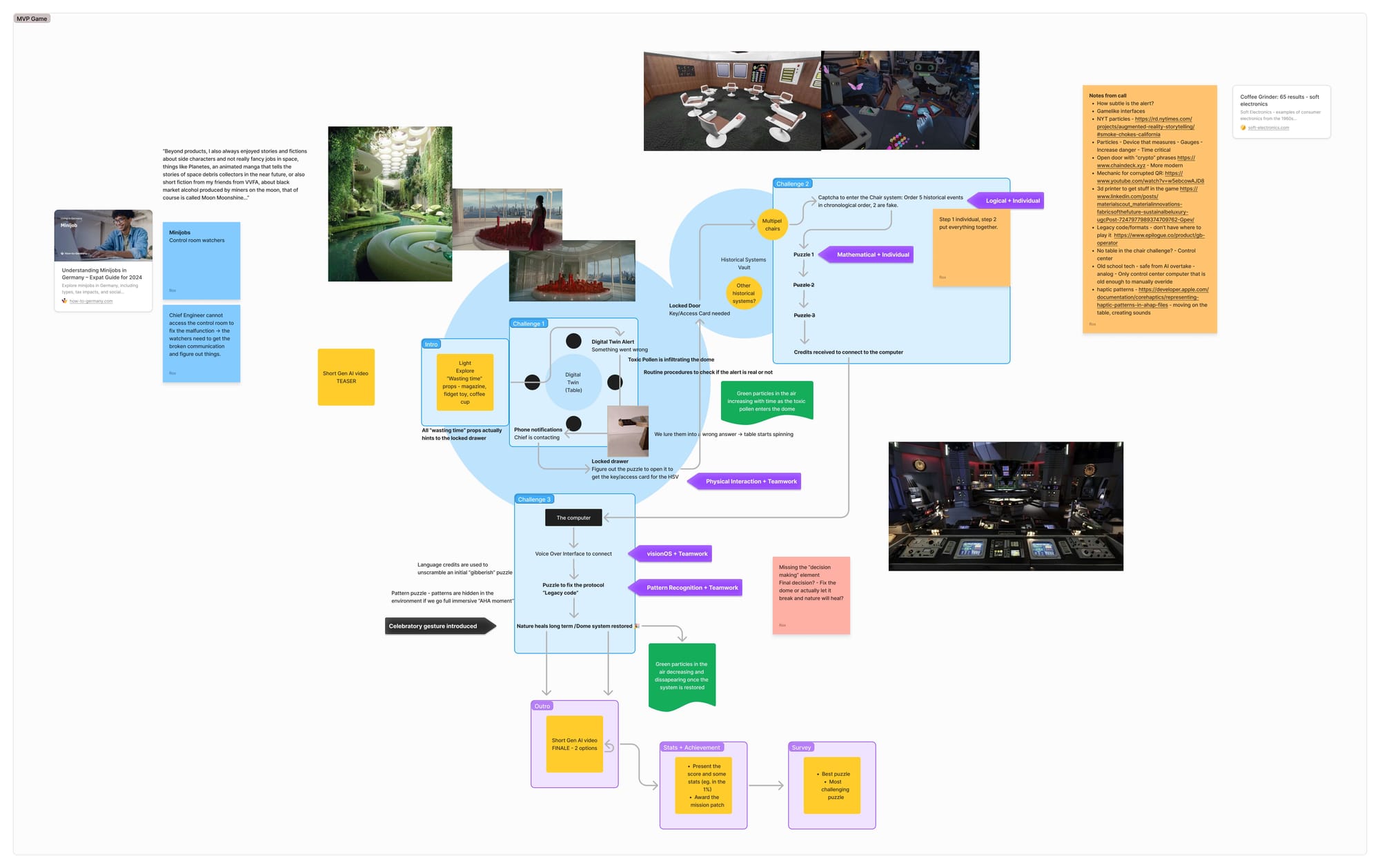
The Golden Compass
This came after the blueprint. The drawing of the space clarified what the visual tone needed to achieve, so we assembled a focused set of concept images and references to lock style. We took a page from Ralph McQuarrie’s Star Wars concept art as a north star for preproduction clarity for architecture, objects, light, materials.
We collected an extensive set of visual references in shared Cosmos boards, combining different directions we wanted to explore across worldbuilding, materials, and mood. These boards guided how we crafted our Midjourney prompts, helping us write descriptions that mirrored our visual intent and led to AI-generated explorations we could quickly refine before moving into 3D. This blend of human curation and AI-assisted exploration helped us define the atmosphere of The Green Spurt with precision and speed.
This is where emotion turned tangible. Light, materials, and scale all shape mood. The Golden Compass translated intended feelings into visual decisions we could execute. As a small team, it gave us a shared visual language before diving into production. It acted as our anchor, keeping the world consistent in tone and feeling.
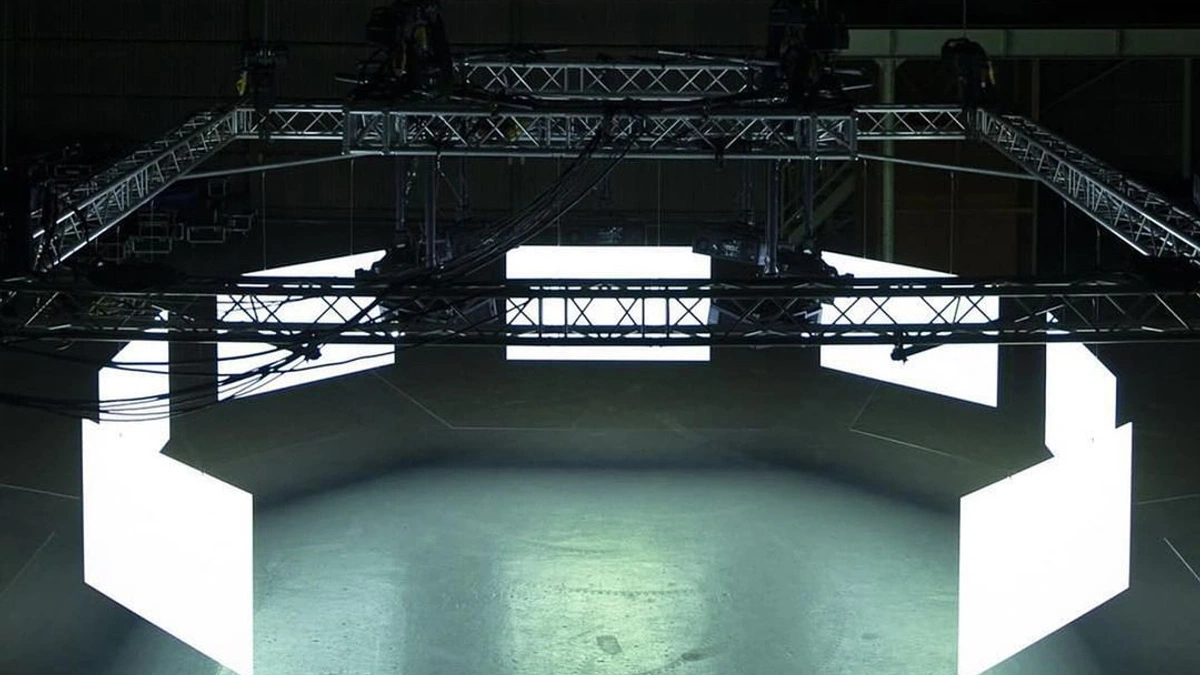

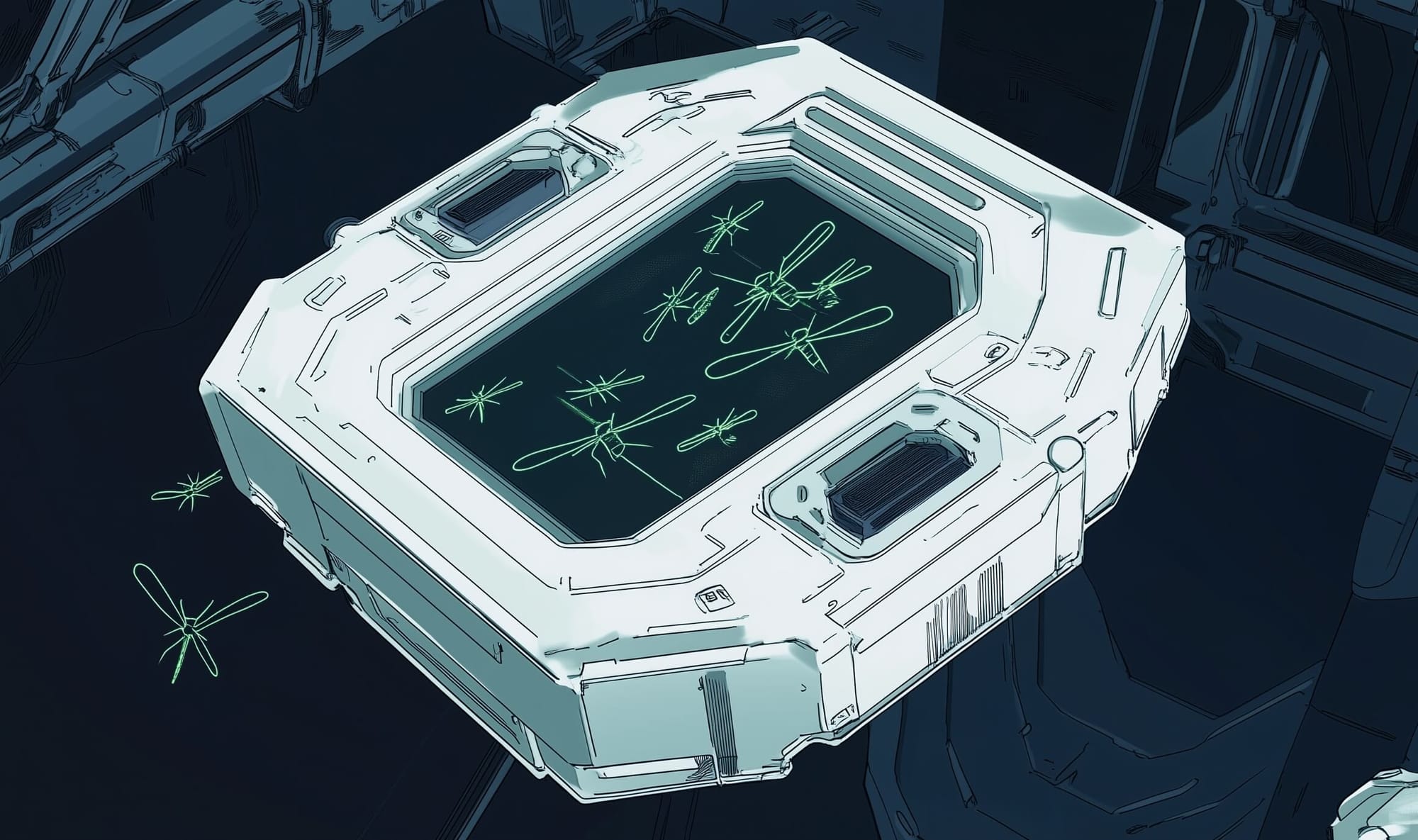
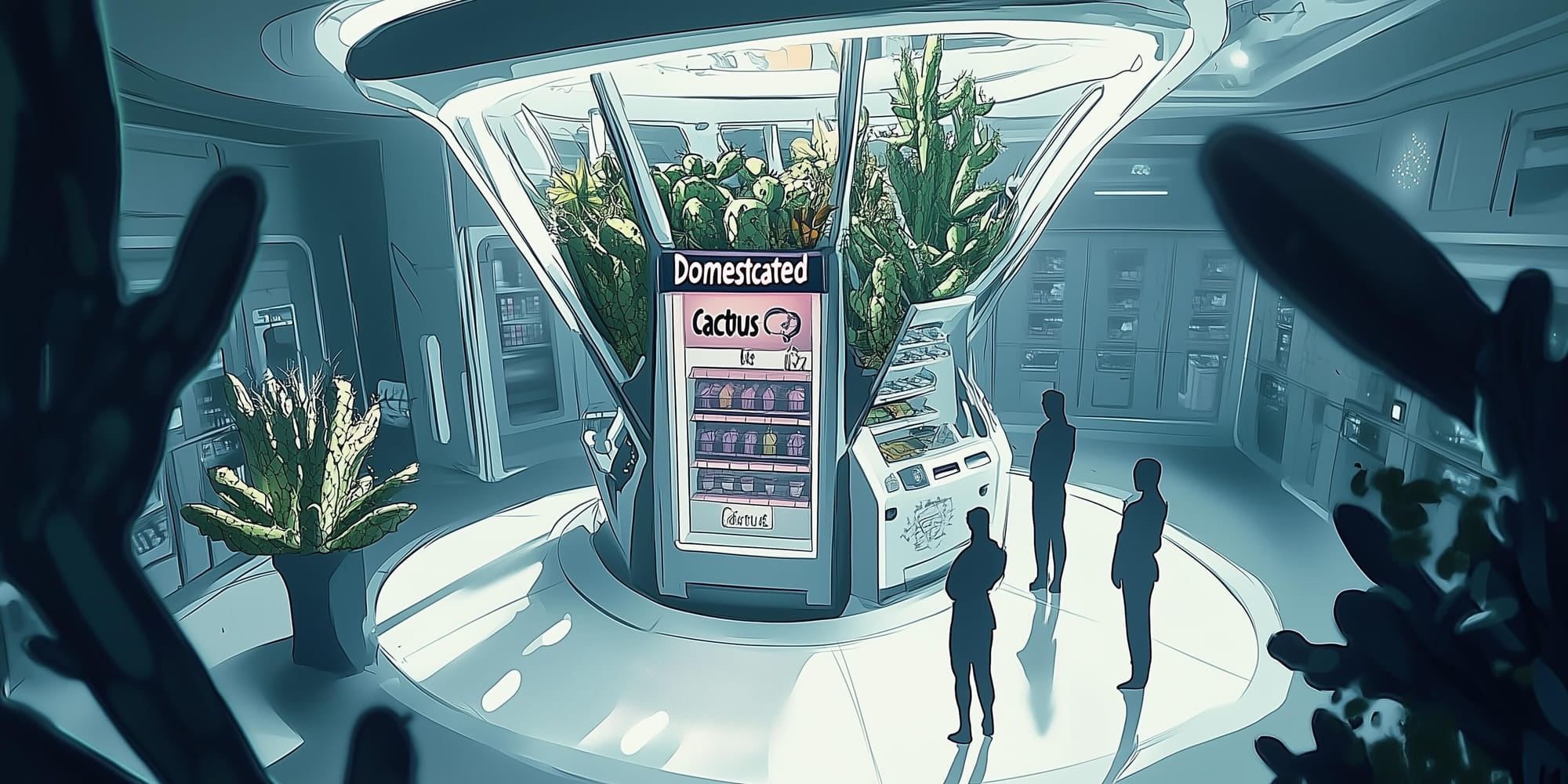
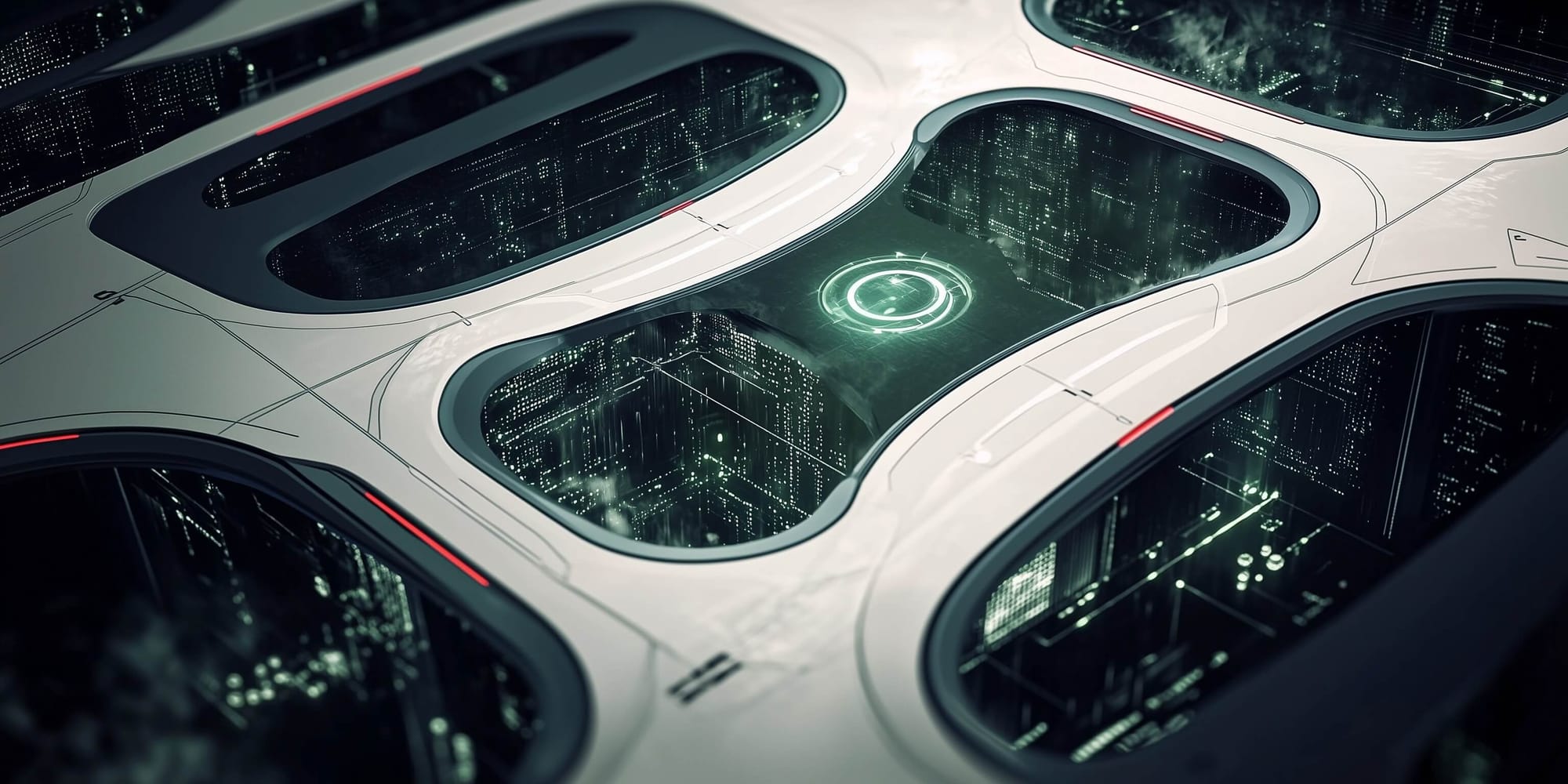
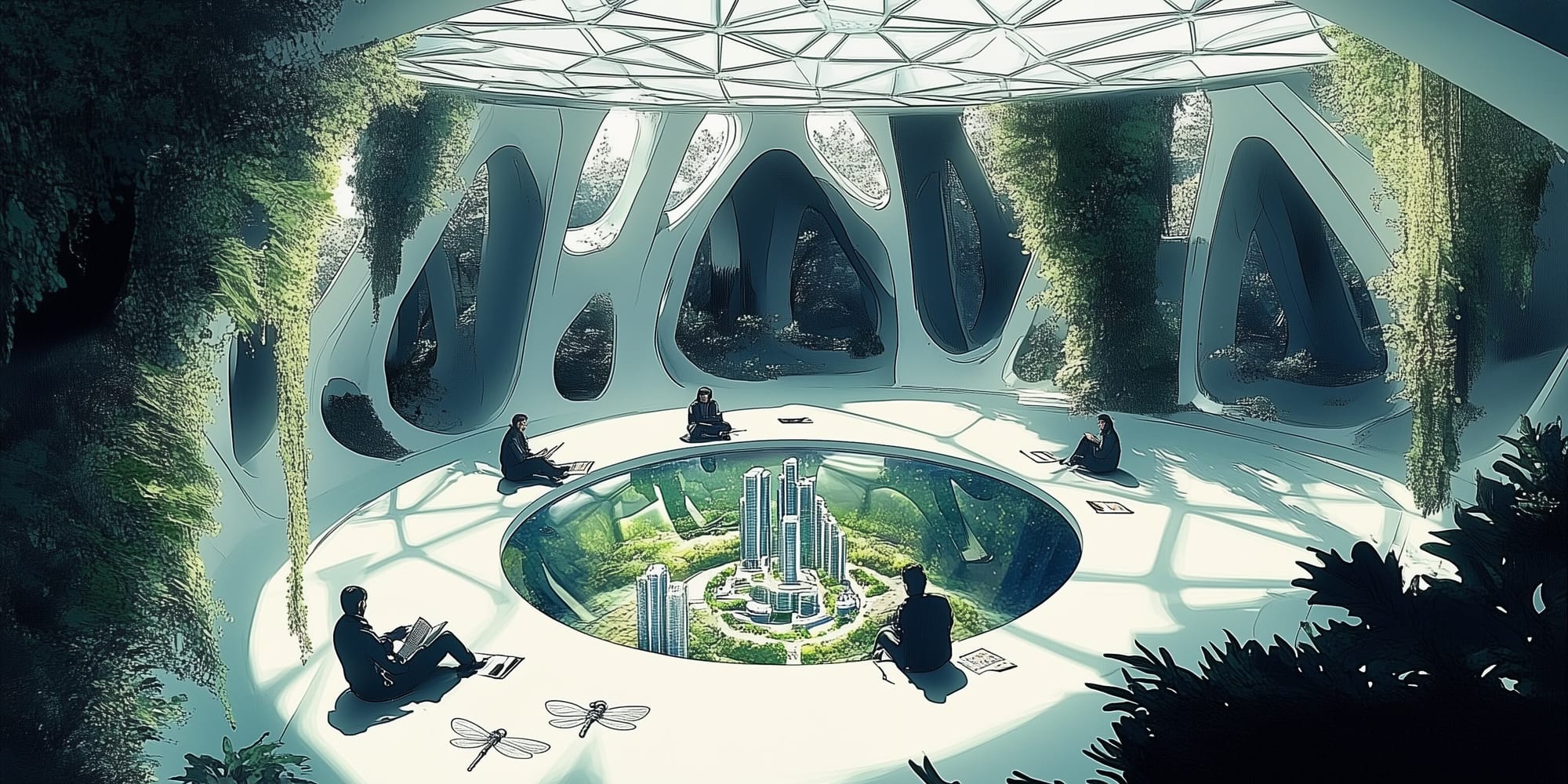

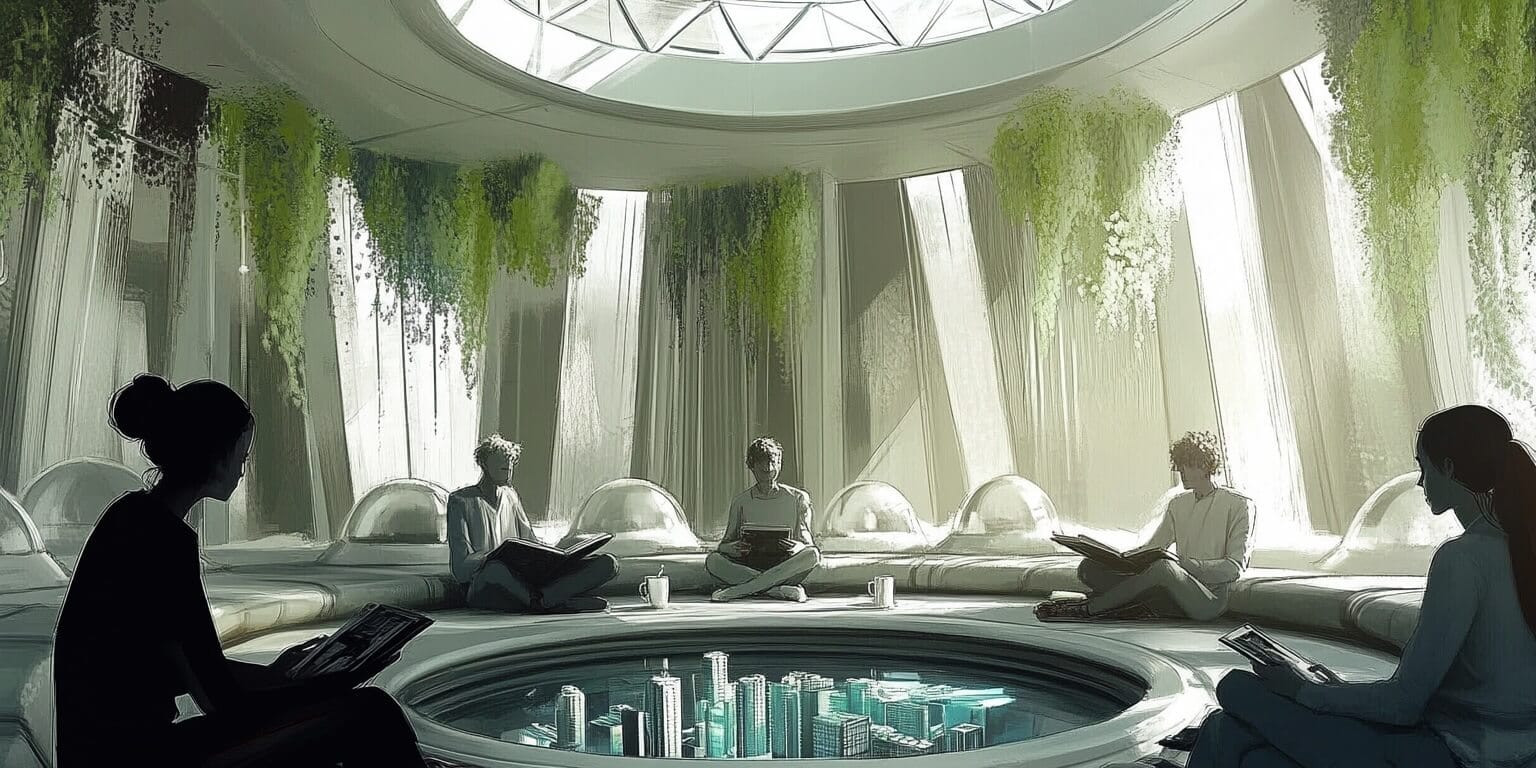

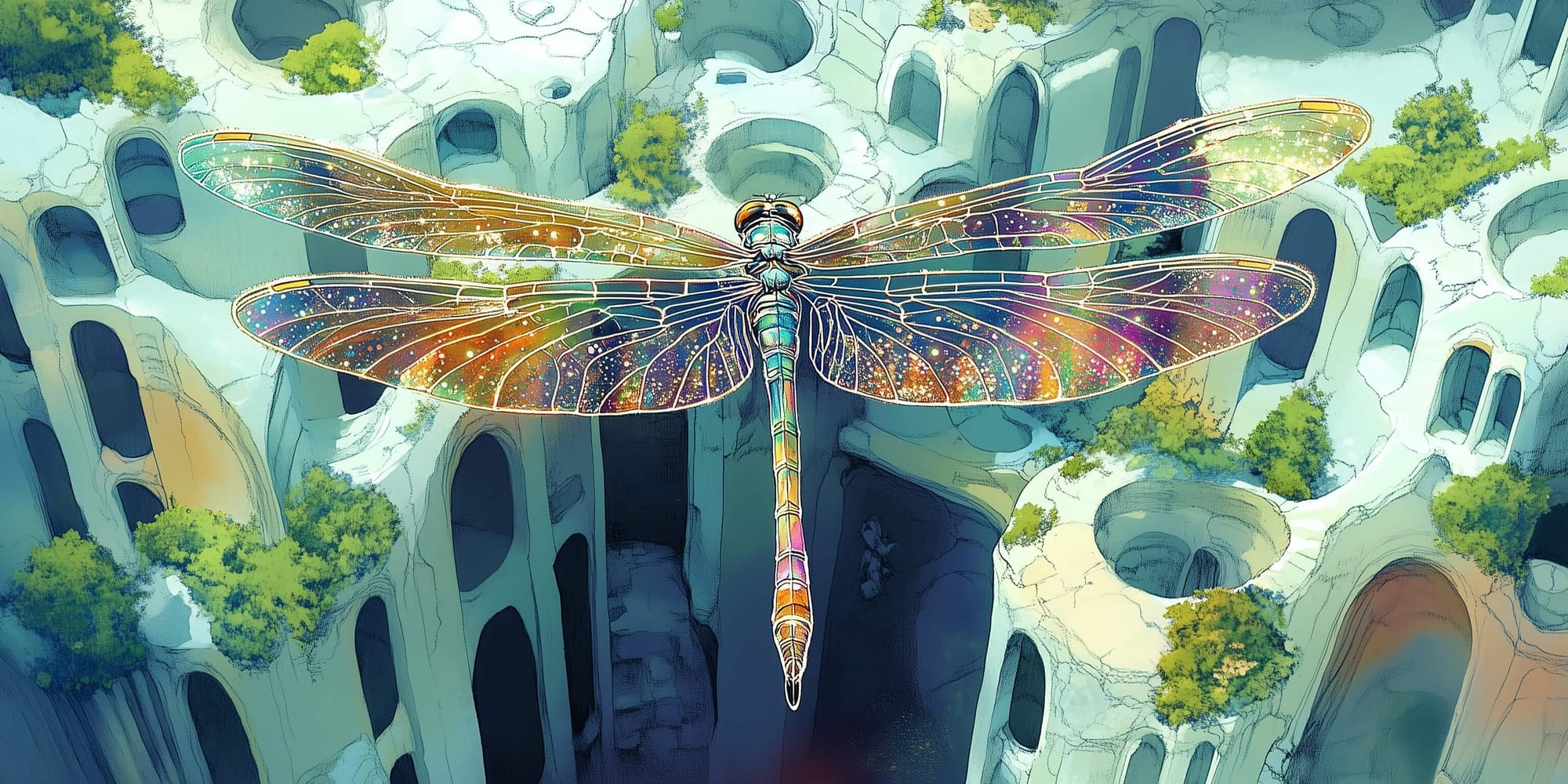
Selected Golden Compass concept art from The Green Spurt created with MidJourney
When building spatial experiences, separate discovery from production. Start broad with a mechanics repository to understand what kinds of actions can carry emotion (inspiration). Use low-fidelity spatial blueprints to talk through flow, comfort, and sequencing before you build (conversation). Lock the visual tone early with shared references or AI-assisted explorations so everyone builds toward the same atmosphere (alignment). Each step brings its own clarity, keeping emotional intent consistent across disciplines.
Play-testing in the Wild
We began testing The Green Spurt early with people close to us. Those first sessions shaped early fixes and gave us a baseline. Once we had a first level running end to end, we opened the public beta and presented the experience at Let’s Vision 2025 in Shanghai.
The conference marked a turning point for us. Hall traffic was constant, sessions were short and attention was fragmented. In that context it became clear that we had started too high. The Glitch level that is now our second demanded pattern finding, memory, multi-step input, and tight coordination. New players first needed orientation, a role, and a reason to care. They were eager and curious, but unanchored. We had dropped them straight into a complex puzzle space and expected them to swim. Some did; some froze; most hovered between excitement and confusion.
Conversations with seasoned game builders such as Ryan McLeod (Blackbox) and Doug North Cook and Michael Mandel (THRASHER) aligned with what we were observing. Start smaller. Teach the rhythm of the experience. Let confidence build before introducing lateral thinking. Their guidance validated that the gap we were seeing was not about difficulty. It was about when and how we introduced it.
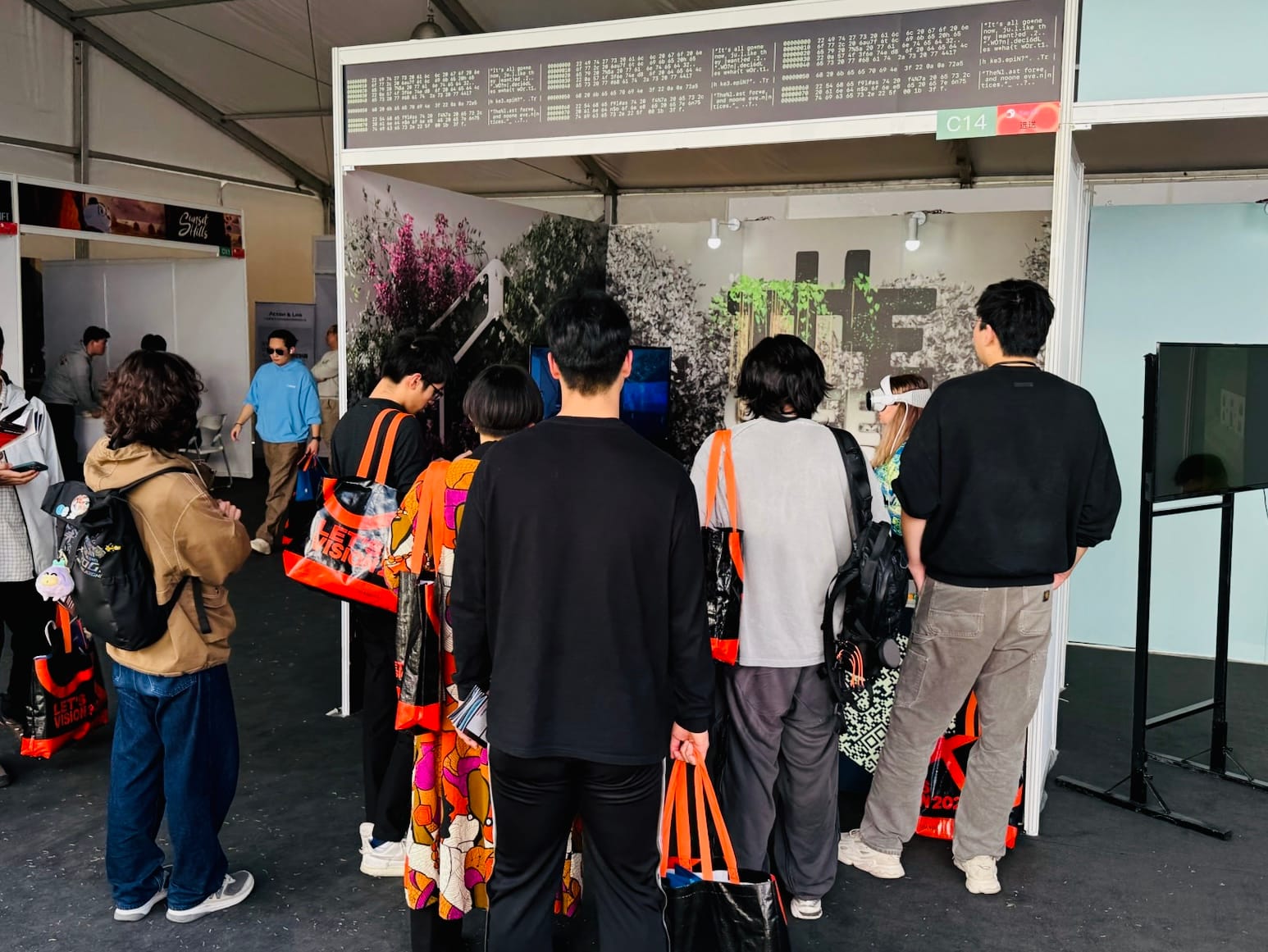
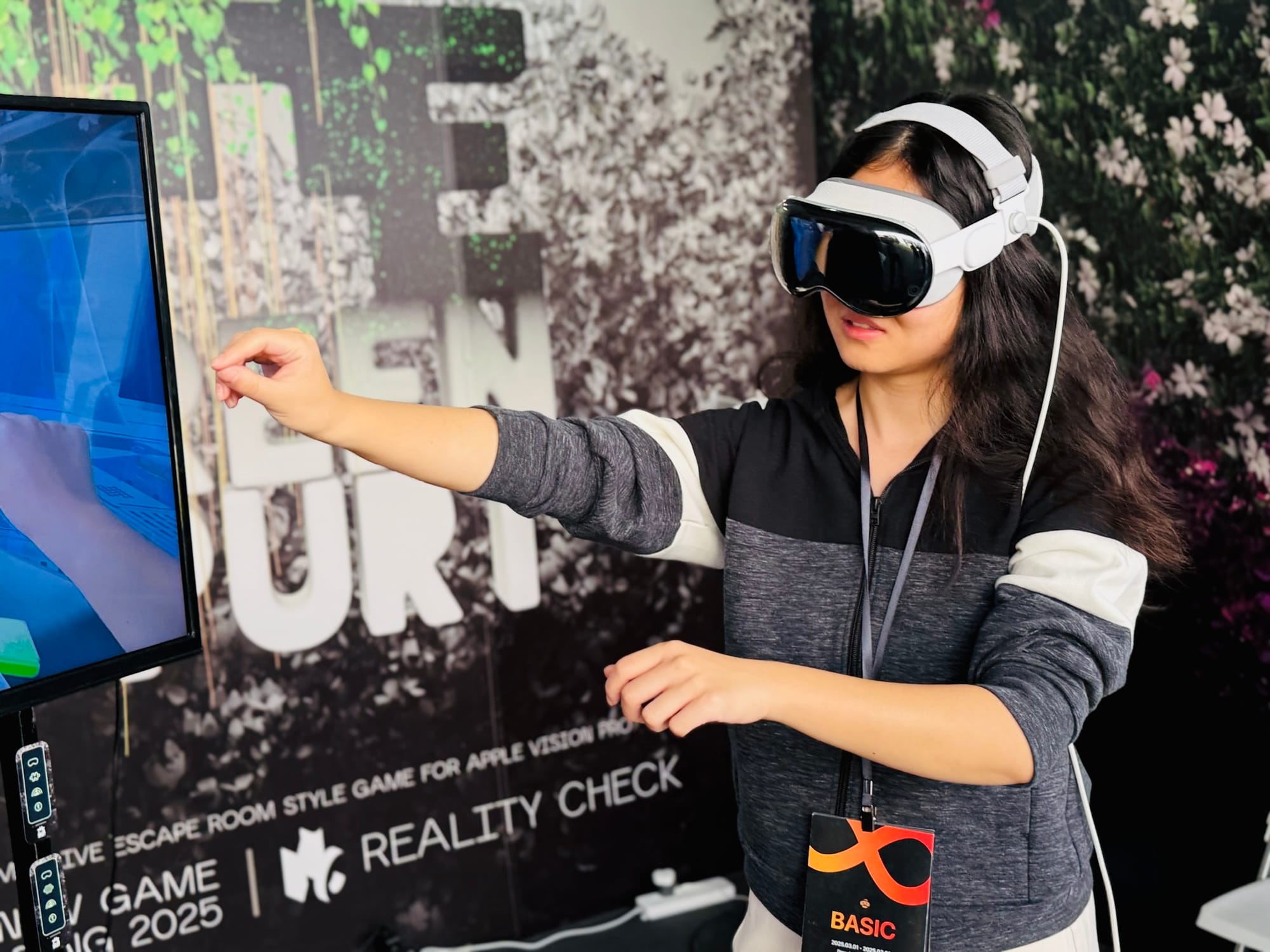
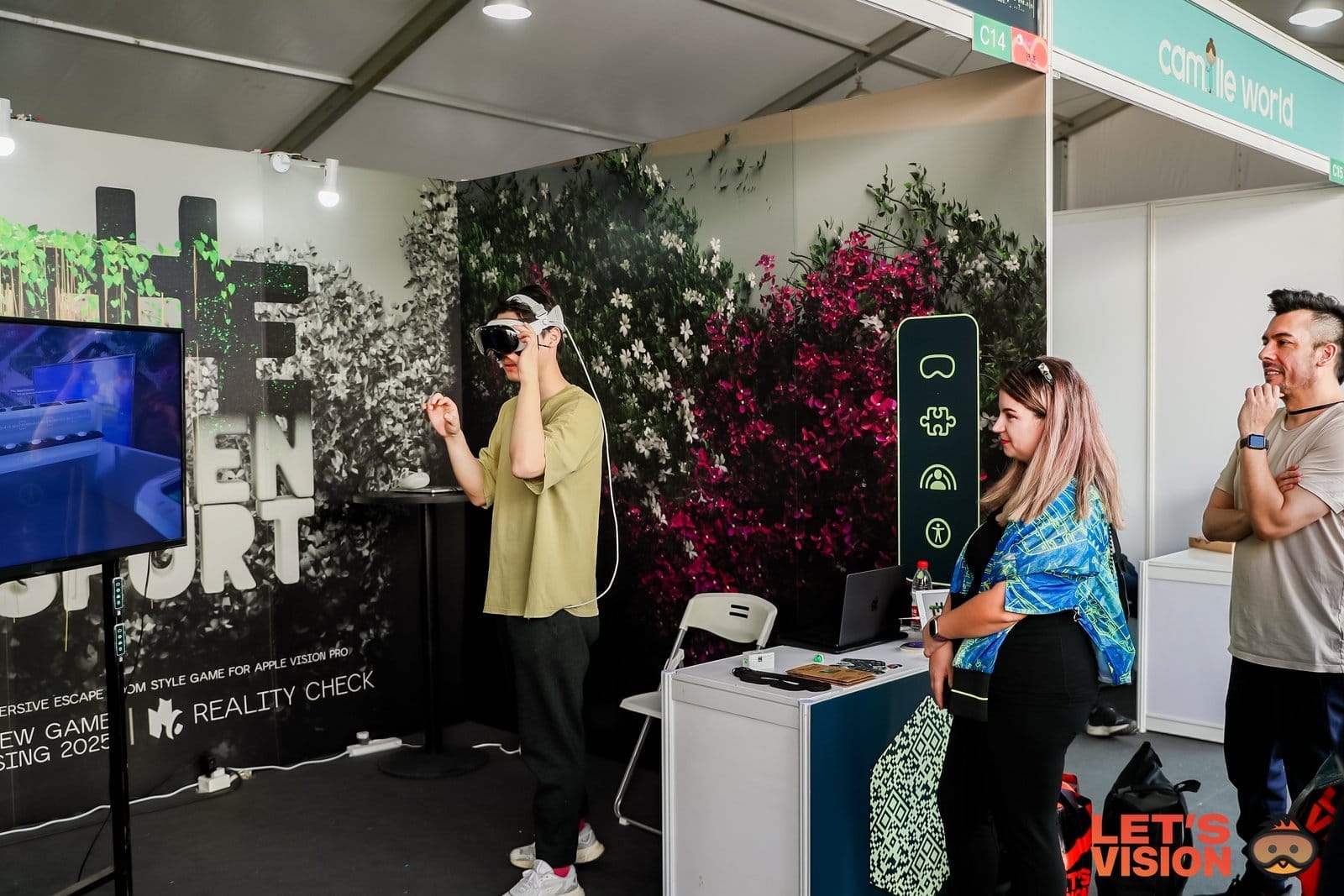
The Green Spurt booth at Let's Vision 2025
Soon after, feedback from our beta community confirmed the same pattern. One of our testers, Andrew Erickson, shared the following:
“I'm not sure I'm getting a sense of what the overall storyline is. I'm a watcher, but I'm the person doing the things to complete the mission. What is the mission? What is the back story? Am I a scientist of some sort stuck in a lab? How did I get there and why is it up to me to complete these tasks :) Also, what am I ultimately doing? Protecting the planet from some sort of toxin being released if I don't solve the puzzle in time? It's also possible I just completely missed what this is but I had this feeling I was solving two puzzles but not actually knowing why I was doing it.”
The conference and the beta round made it clear that we opened with a level that asked too much, too soon. The puzzle complexity was right for the experience, but it belonged after a lighter onboarding that established place, role, and motivation. The learning was not to make the game easier but to stage its first minutes with care.
Spatial experiences are emotional experiences. Each participant arrives with a different mindset and learns at their own pace. Testing early across diverse audiences reveals how orientation and emotional connection evolve together. There’s no universal reaction in spatial storytelling; every test is a mirror of how people feel when presence, curiosity, and story collide.
Feel. See. Do.
We joined Apple’s "Create interactive stories for visionOS" event the night before the Let's Vision conference. The sessions were strong, but after a weekend on the show floor one talk clicked in a new way: Patrick Mullen’s “Transform your ideas for Apple Vision Pro”. He presented a simple framework we could act on immediately: Feel. See. Do.
Feel — Make the audience feel emotionally connected to the subject. Clarify their point of view and role.
- Is the audience themselves?
- Are they embodying a character?
- First or third-person?
- Are they active or passive observers in this world?
See — Define not only where the story takes place, but how it is experienced.
- What is the "stage" for your story?
- Is this a seated or standing experience?
- Is it tabletop of room scale?
- Does this change throughout the story?
Do — For someone to choose to interact, they must be bought in. Interactions should feel important, not just push the story along.
- How does your audience interact?
- What are the mechanics?
- When does the audience interact?
- Why do the interactions matter?
We were designing for emotion long before we had language like Feel. See. Do. This framework helped us articulate the emotional journey we had been intuitively building and helped us realize what we were missing. With a focus on the "Feel" area, we would insert a new level before the original opener. Its only job was emotional grounding and basic literacy.
Spatial computing lets us combine the visual story of film, the interactivity of games, and the presence of live theatre. Play to the strengths of this new medium where presence is the strongest lever. Our minds interpret these moments as lived experiences. Use the
Feel. See. Do. framework to organize creative development into the three areas with the biggest impact on the audience.Opening scene: The elevator to the BioVault
The elevator scene became the bridge between reality and our game's world. Not a literal elevator ride, but a short transitional level that eases the players into the experience. Think of the elevator in the Severance TV show as a touchstone for a clean identity handoff. Our version stays playful. You will even hear Bossa nova elevator music in Level 1 as a small homage. It’s a tone setter: identity before puzzles, orientation before challenge.
Level 1: The MPA
Level 1 is short by design. You start as a new Watcher on the job. You receive a welcome card and flip it. You see a message meant for you. You will see your Game Center profile picture on the back, so the card feels made for you. You complete an in‑world “biometric” setup that feels ceremonial rather than clinical. The system acknowledges you. Verified.
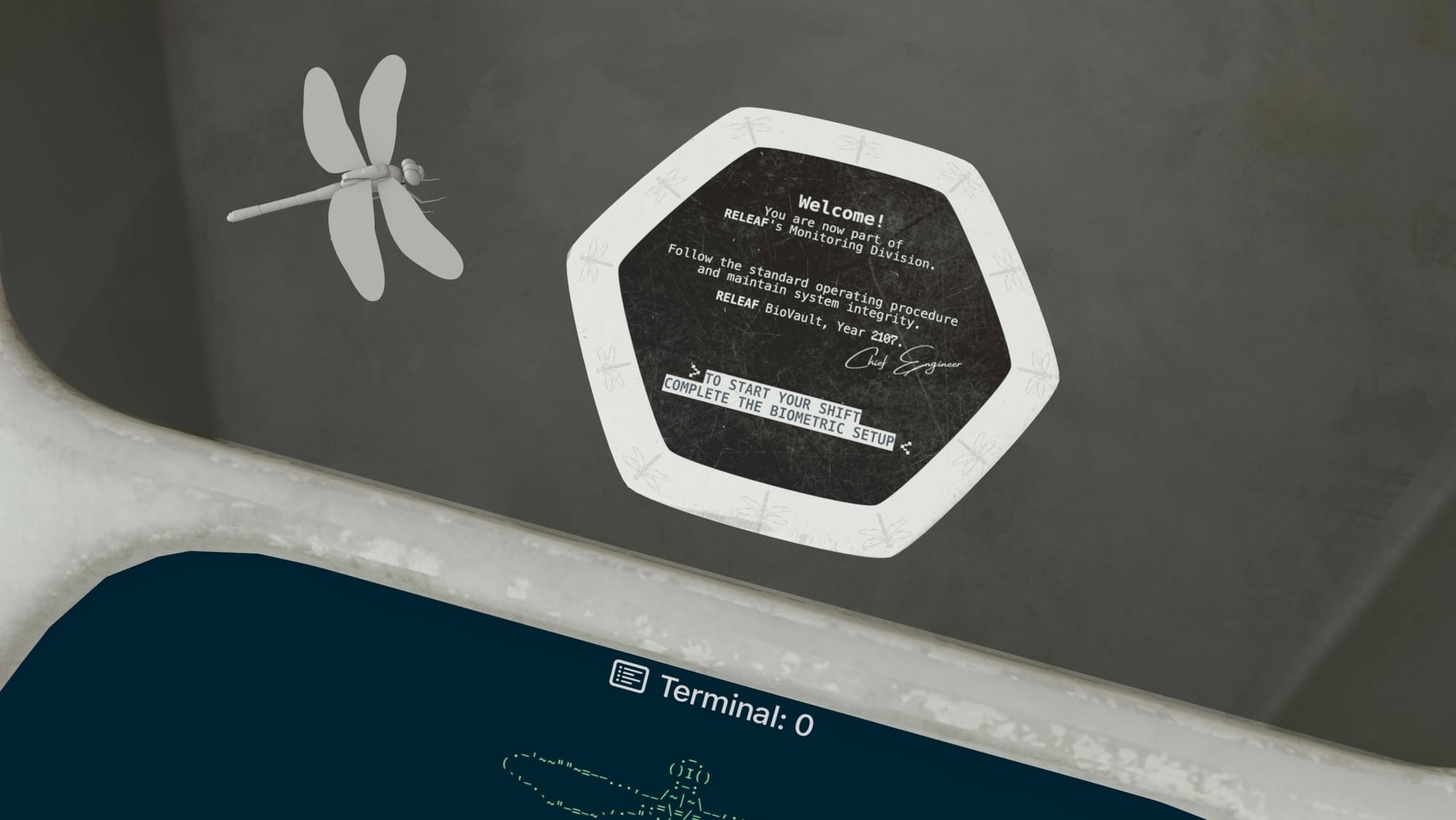
We call this opener The MPA (for multiparty authorization). It originally required everyone to finish this step before proceeding, but we now let each player complete it in their own time so the group flow stays relaxed. Although The Green Spurt follows the structure of an escape room experience, the timer does not start in this first level. We made this decision intentionally so the onboarding could remain calm and grounding, giving players time to settle in, understand their role, and feel part of the world before the timer starts.
What changes under the surface:
- Identity becomes lived, not told. Players understand their place in the story.
- Confidence arrives early. Players learn the tone of interaction without the time pressure.
- Team flow improves. With the basics settled, chatter shifts from “How do I use this?” to “What does this mean?”
Design the first minutes of any spatial experience as an emotional contract. Make identity feel lived, not told. Give players a simple interaction that lets them claim the role and build the bond. Establish rhythm before asking for improvisation. This moment is not filler; early belonging sets the emotional weight for everything that follows.
Appendix: References for early onboarding inspiration
Drawn from teams with deep experience in immersive, cinematic, and interactive formats, these examples illustrate how thoughtful onboarding can teach, orient, and establish emotional grounding, setting a benchmark for anyone designing the first moments of spatial experiences.
- In What If…? An Immersive Story (Marvel Studios & ILM Immersive in collaboration with Disney), the onboarding lives inside the fiction: you are greeted by the Watcher and learn gestures to master the mystic spells. That ritual is part of the story and anchors your identity as the Hero of the Multiverse.
- In For All Mankind: Time Capsule (an AR experience from Apple TV+), you open an interactive letter addressed to Danny Stevens, introducing you to his world after the loss of his best friend.
- In D‑Day: The Camera Soldier (by TARGO Stories and TIME Studios), your first interaction is opening a box of personal items, dog tags, letters, a camera, putting you in the narrator's place and creating an early emotional attachment to the story.
Next in the series: Designing the Emotional Arc
Part II will explore how we translated emotion into progression. We will map each narrative moment to its intended feeling and show how this guided the structure of Level 2: The Glitch and Level 3: The Legacy.
With immersive regards from my digital persona!



